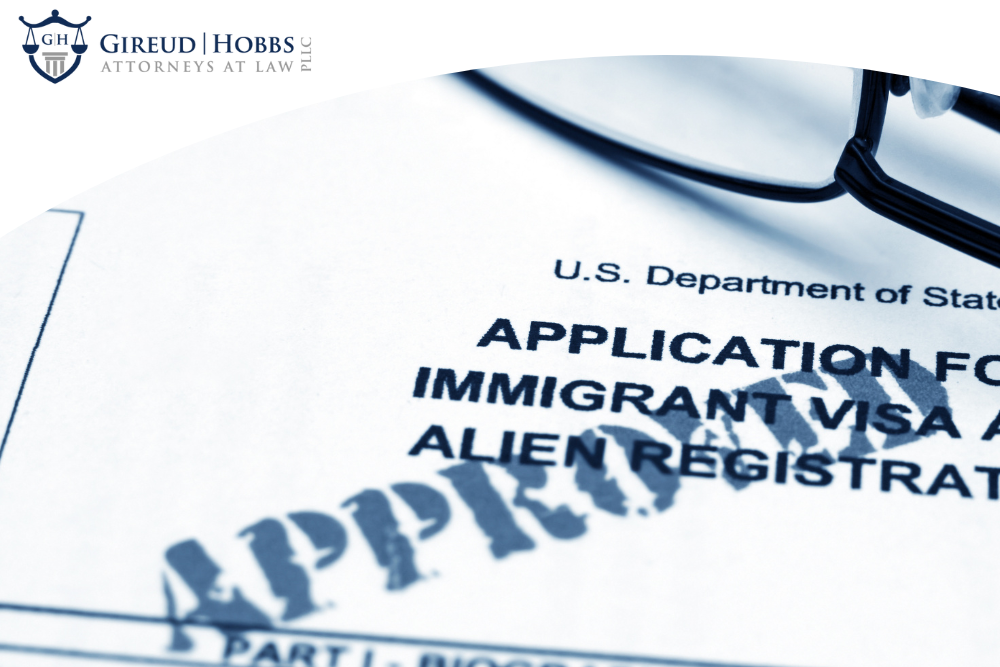U.S. Visas – Visit or Move to the United States on a Visa
If you’re like many people, you want to visit or move to the United States – but to do so, you need a visa.
A visa is a temporary document that authorizes you to come to the United States for a specific purpose.
But how do you get one, and how do you know which type of visa is right for you?
This guide explains everything you need to know.
What is a U.S. Visa?
A visa is a document that gives you permission to enter the United States for a specific period of time.
It’s stamped or glued into your passport, and it allows you to stay in the U.S. for a certain amount of time – usually between 90 days and six months.
There are many different types of visas, and each one allows you to stay in the U.S. for a different reason.
For example, there are visas for tourists, students, workers, and family members of U.S. citizens and legal permanent residents.
Types of U.S. Visas
There are many types of visas, and each one allows you to stay in the U.S. for a different reason.
Some are nonimmigrant visas, which allow you to enter the country with no intention of becoming a lawful permanent resident or U.S. citizen, and others are immigrant visas, which lead to residency and citizenship.


Request A Free Consultation Today!
Law Services
Request A Free Consultation Today!
Common Nonimmigrant Visas
Nonimmigrant visas are for people who don’t intend to remain in the United States permanently, and there are dozens of them. The following table outlines the visa types available to nonimmigrants.
People and Purpose of Visit to the U.S. | Visa Type |
Athletes competing in a competition for prize money | B-1 |
Au pair | J |
Australians with a professional specialty | E-3 |
Business visitors | B-1 |
Crew members | D |
Diplomats and foreign government officials | A |
Domestic employees or nannies who are accompanying a foreign national employer | B-1
|
Exchange visitors | J |
Extraordinary abilities in the sciences, arts, education, business or athletics | O |
International cultural exchange visitors | Q |
Intra-company transferees | L |
Medical patients seeking treatment in the U.S. | B-2 |
Media members and journalists | I |
NAFTA professional workers from Mexico or Canada | TN or TD |
Performing artists, athletes and entertainers | P |
Physicians | J or H-1B |
Professors, scholars or teachers coming to the U.S. as exchange visitors | J |
Religious workers | R |
Specialty occupations in fields that require highly specialized knowledge | H-1B |
Spouses and children of lawful permanent residents of the United States | V |
F or M | |
Temporary agricultural workers | H-2A |
Temporary workers not working in agriculture or who are performing labor of a temporary or seasonal nature | H-2B |
Tourists, people on vacation and those visiting for pleasure | B-2 |
Trainees in a program that’s not primarily for employment | H-3 |
Treaty traders and treaty investors | E |
Victims of criminal activity | U |
Victims of human trafficking | T |
These visas are for people who do not intend to remain in the United States permanently. If you want to live in the U.S. and get a green card, you generally need an immigrant visa.
Common Immigrant Visas
Immigrant visas are for people who do intend to remain in the U.S. permanently. When you have an immigrant visa, you’re allowed to apply for lawful permanent residency and get a green card. After you have a green card and wait the appropriate amount of time, you’re allowed to apply for U.S. citizenship (though you don’t have to if you don’t want to). The following table outlines the visa types available to immigrants.
People and Purpose of Visit to the U.S. | Visa Type |
Spouses of U.S. citizens | IR1, CR1 or K-3 |
K-1 | |
Adopted children | IR3, IH3, IR4 or IH4 |
Family members of U.S. citizens | IR2, CR2, IR5, F1, F3 or F4 |
Family members of lawful permanent residents | F2A or F2B |
Employees of U.S. companies | E1, E2, E3, EW3, C5, T5, R5, I5 or S |
Religious workers | SD or SR |
Iraqi and Afghan translators or interpreters, as well as Iraqis and Afghans who worked for or on behalf of the United States government | SI or SQ |
Diversity lottery winners | DV |
Returning residents | SB |
These visas are for people who do intend to pursue lawful permanent residency in the United States. After a person gets lawful permanent residency and receives a green card, they may choose to apply for U.S. citizenship – but it’s not required. You may remain a lawful permanent resident forever if you don’t want to pursue U.S. citizenship.
Request A Free Consultation Today!
Why Do You Need a Visa to Enter the United States?

Most people who aren’t U.S. citizens or lawful permanent residents can’t enter the U.S. at a border crossing, checkpoint or international airport unless they have a visa. Without a visa, U.S. Citizenship and Immigration Services (USCIS) officials will turn you right around and send you back to your country of origin at your own expense.
There are some exceptions for people who don’t need visas, and in some cases, you can get a visa at your point of entry, but usually, you need to apply (and be approved) for a visa before you travel.
How Do You Get a Visa to Come to the U.S.?
Many people choose to work with a San Antonio immigration attorney to obtain a U.S. visa before they attempt to come to the United States. Working with an immigration attorney makes the process go more smoothly.
That’s generally because attorneys know the law, which types of visas to apply for, and how to fill out and file the appropriate paperwork with the U.S. government. Your attorney can walk you through the whole process, as well as keep tabs on your visa application, so you don’t have to worry about a thing.
Usually, to apply for a visa, you need to fill out and file Form DS-160 or another, similar form. If you’re coming to the United States to work, your employer will have to apply for a visa on your behalf; you can’t apply for yourself unless you’re an investor who meets very specific conditions.
A Word on Business Visas
If you’re an employer and your company wishes to hire foreign workers, you need to go through a specific process to get visas for your future workforce. Generally, businesses must agree to sponsor workers they wish to hire.
A company has certain responsibilities to its foreign employees, and it’s the company’s responsibility to prove to the U.S. Department of Labor that it can meet those obligations.
If your company fails to meet the requirements to sponsor immigrants to come to the United States, you won’t be eligible to apply for visas on behalf of your new hires. Many companies choose to work with a business immigration attorney who can handle every step of the process for them.
Do You Need to Talk to an Attorney About U.S. Visas?
If you’re trying to obtain a visa to come to the United States, or if you’re running a company that needs to hire foreign workers, we may be able to help you. Call our office today to schedule your consultation with an experienced and knowledgeable United States immigration attorney who can give you the answers and legal advice you need.

